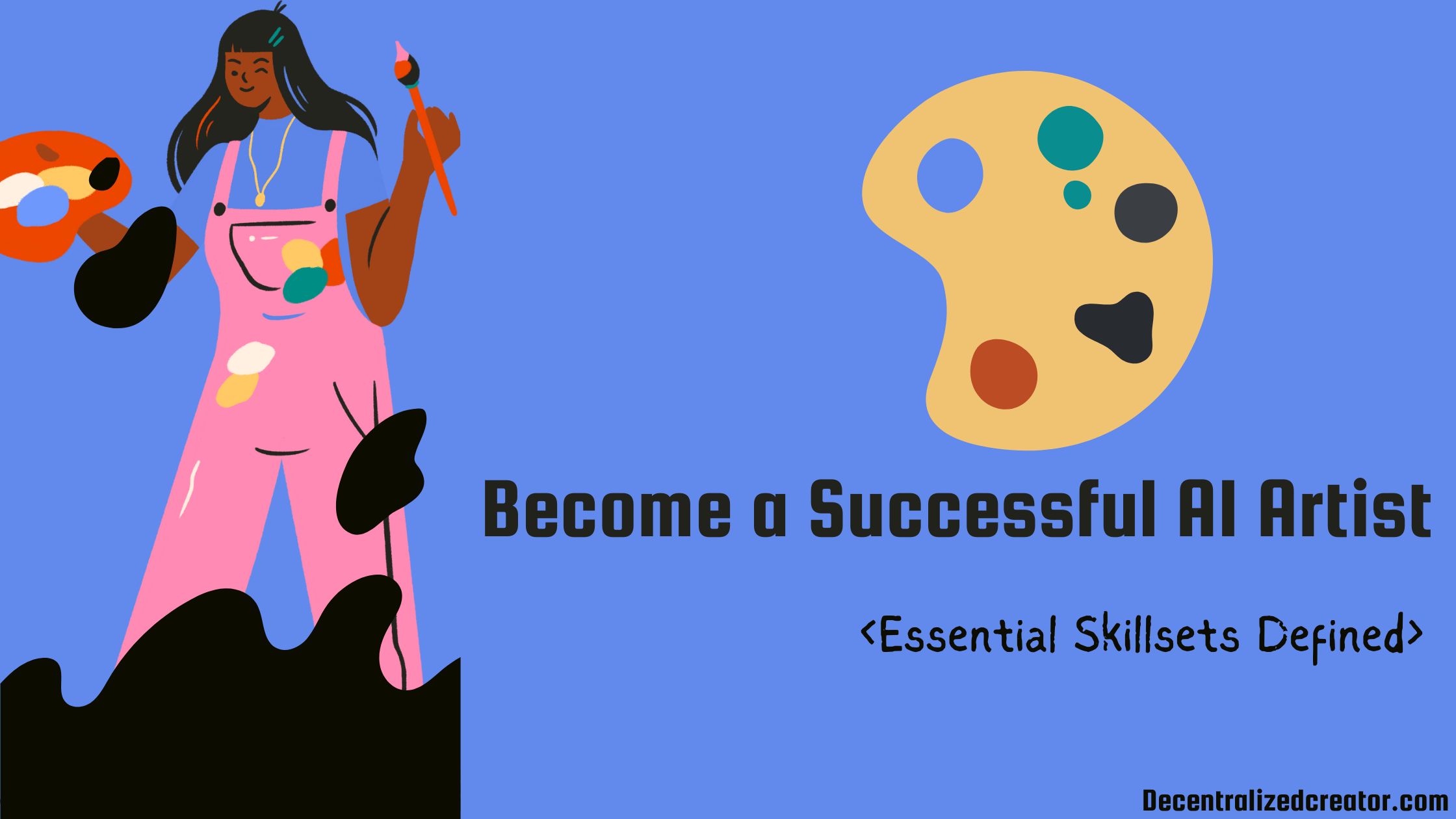Artificial Intelligence (AI) is the future, and text-to-image generative AI models are revolutionizing industries that include art, graphic design, architecture, photography, music, fashion, and film.
OpenAI’s Codex has even started writing code. If we think about what the capabilities of GPT-4, Stability AI, and Midjourney Labs’ next project will be, there must be goosebumps all over our bodies. It’s clearly visible that all AI models have enormous potential.
The thing is how we are going to use them. Do we have the skillset for effectively utilizing generative AI models in our careers?
A skilled driver is a must to handle high horsepower cars like Rimac Nevera and Bugatti Chiron SS
In this article, let’s learn what skills one must have to become a successful AI artist.
- Skills Needed to Become a Successful AI Artist
- Prompt Engineering
- Ability to Steal Prompt Ideas
- Ability to Leverage the Platforms Available
- Text-to-Image Generative AI and Professional Artists
- Scope for AI Artists in Future
- Artworks of Successful AI Artists (Extremely Creative Artworks!)
Skills Needed to Become a Successful AI Artist
Prompt Engineering
Everyone who wants to create AI art needs to be proficient at prompting. Prompts are the natural language text descriptions that act as input for text-to-image generative models such as DALL.E 2, Midjourney, and Stable Diffusion. To put it simply, you can interact with these generative models only via the prompt. The more clear and detailed the interaction, the better the output.
You can also give an image as a prompt along with the text description.
Prompt engineering is nothing but creating good prompts that will eventually yield better results. Though creating artwork or design is just a single click away with the advent of text-to-image AI, it still requires at least decent prompting skills.
How to Write Good Text-to-Image Prompts: Prompt Engineering Made Easy
Writing prompts is an art by itself. By writing a prompt, you are talking to the computer and specifying your requirements. As a response, the computer—generative models in this context—will interpret your prompt and start working towards delivering the result, which is an AI-generated image.
Although anyone can create prompts today, few do so in a way that gets the best results. Prompt engineering involves adding modifiers related to colors, art history, art philosophy, historical artists, and art styles.
To write good prompts just follow the below structure:
A good prompt will contain:
A noun: A noun is a primary subject in any sentence. Without a noun, there is no meaning. You can add more than one noun.
Adjectives: Adjectives are the key modifiers in prompts. Adjectives can bring a lot of emotions and styles to your prompt. Example: magnificent, realistic, massive, colorful, etc.
Artist names: Introducing artists names are the most common and powerful technique in prompt engineering. You can easily mimic your favorite artists style just by mentioning their names. Example prompt: An anime cat in the style of Greg Rutkowski and Beeple, high quality, intricate details

Style: There are many styles you can infuse into the art you want to generate by mentioning the style modifiers. Example: modern, traditional, fantasy, surrealism, pixel art, and so on.
Computer graphics: The next level of styling is adding computer graphics (CG). To do so, add CG modifiers, such as Unreal engine, ray tracing, 3D rendering, and so on.
Quality: You can avoid upscaling the image most of the time by mentioning the quality modifier. Add keywords, such as high, 4k, 8k, and more.
Art platform names: Mentioning art platform names in the prompt will inherit trending styles on that particular platform. Example Prompt: a masculine man, highly detailed epic cinematic concept art CG render digital painting artwork, trending on artstation
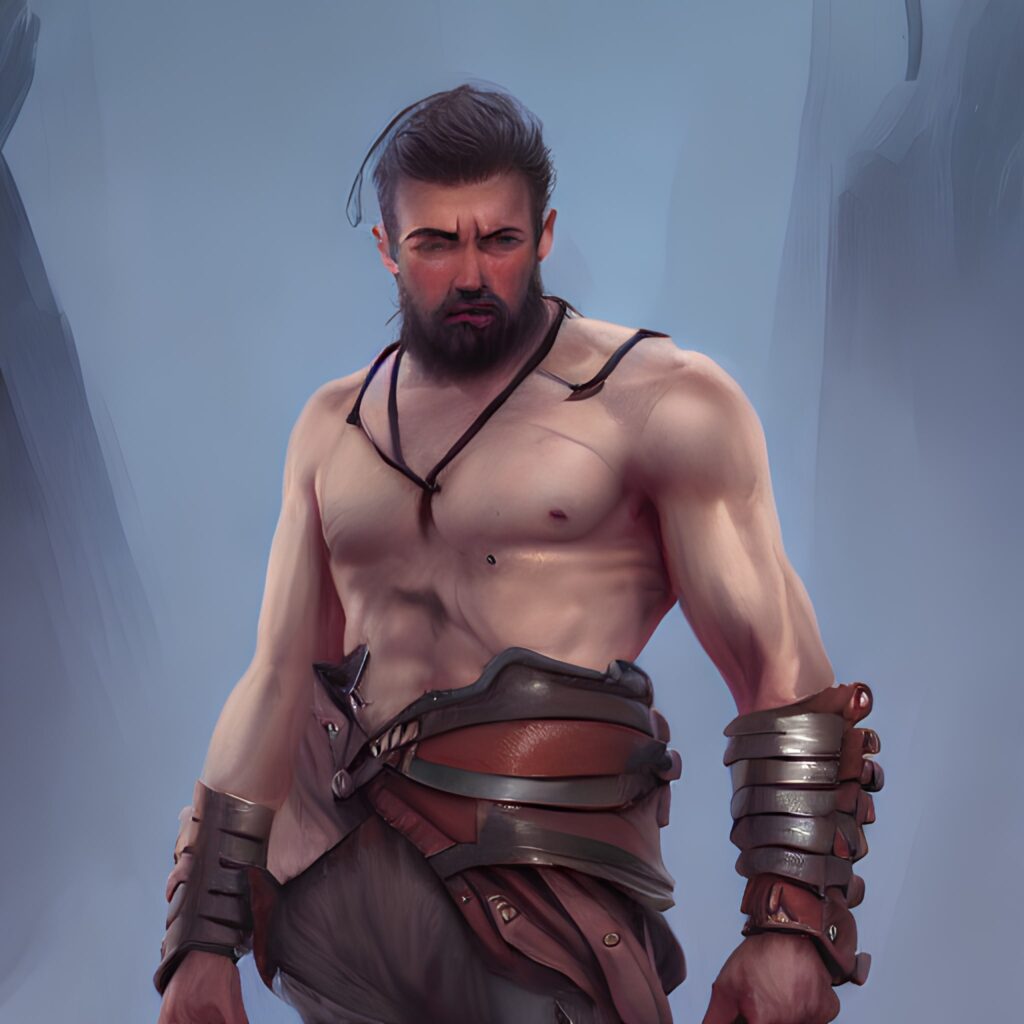
Art medium: Art medium is a substance that an artist uses to create artwork. As per the requirement, you can add the art medium modifiers. Examples: oil pastel, digital art, pencil art, and more.
According to your requirements, you can add/ remove one or two modifiers.
Example of a good prompt: moonlight photography, a deer in the forest, 8k, realistic, highly detailed, full mist
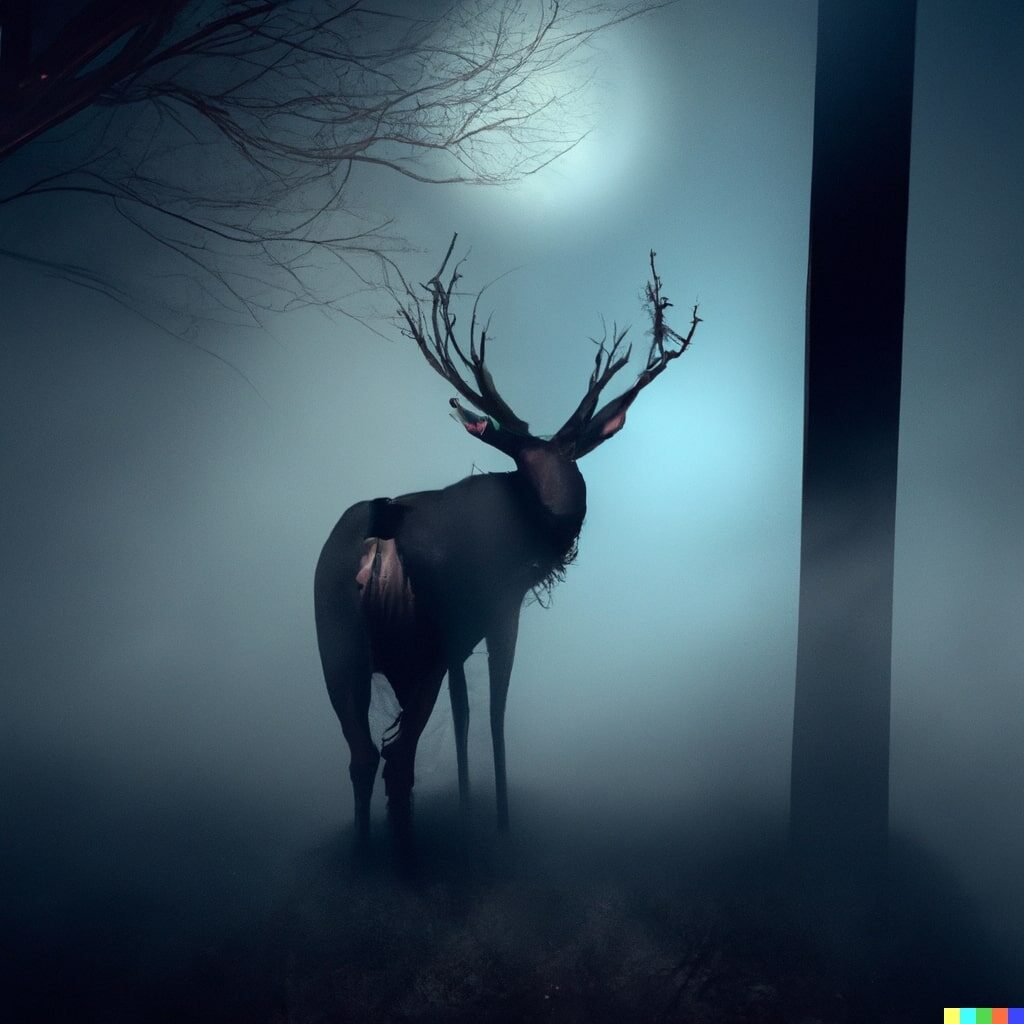
Ability to Steal Prompt Ideas
The next skill that helps you to become a successful AI artist is stealing prompt ideas from other artists. Stealing prompt ideas is not an illegal thing to do.
What I mean by stealing prompt ideas is taking inspiration from other fellow prompters. For some people, it is difficult to prompt continuously and they might experience writer’s block. If you are one of them, you need to be good at this technique.
Compared to prompt engineering, stealing prompt ideas is an easy task if you know where to look for them.
Platforms to look out for prompt ideas are:
- AI Art Galleries
- Subreddits
- Twitter and Instagram
AI Art Galleries
AI art galleries are the gold mine of prompt ideas. AI art galleries are the platforms that curate millions of AI-generated artwork along with input prompts.
The best part of these art galleries is that they are free to use and have an easy-to-use user interface. Currently, there are two AI art galleries available namely Lexica and OpenArt.
Lexica is a Stable Diffusion search engine that curates and hosts millions of Stable Diffusion generated artwork. The platform was developed by Sharif Shameem.
Lexica allows users to search either by image relevancy or prompt text. Scroll through the feed of the platform to indulge in the creative waves of other fellow AI artists. If you have come across any image that stuns you much, you can save that image for later use or regenerate that prompt.

Yes, you can not only explore the creativity of other artists but can generate images using Stable Diffusion. To do so, click “Generate”.
OpenArt is another excellent source to steal prompt ideas. Unlike Lexica, OpenArt curates and presents DALL.E 2, Midjourney, and Stable Diffusion generated images.

Scroll through the feed of OpenArt to take inspiration from over 10 million AI-generated images. The platform supports prompt search as well as image search.
You can either bookmark your favorite creations or remix them. Since OpenArt hosts DALL.E 2 for image creation or remix purposes, you will only get 20 free credits.
Subreddits
Most of the time, you can get enough prompt ideas from the AI art galleries. However, if you are looking for unique and advanced prompt tips and tricks, you must not miss the Subreddit page of DALL.E 2, Midjourney, and Stable Diffusion. Because Reddit is the place where most AI enthusiasts, researchers, and interesting people reside.
Twitter and Instagram
If you feel like surfing through Subreddit pages is time-consuming due to an unorganized feed, you must follow certain people on Twitter and Instagram to get advanced prompt ideas.
Don’t waste your valuable time searching for AI people on Twitter and Instagram. Instead, follow AI artists handpicked by DecentralizedCreator.com.
Ability to Leverage the Platforms Available
Last but not least skill to become a successful AI artist is knowing how to leverage the emerging platforms and technologies that are related to AI.
First, let’s explore prompt marketplace platforms that are currently available. Prompt marketplaces are helpful for both emerging AI artists as well as pro-AI artists. As an emerging AI artist, you can use them to steal prompt ideas. If you are a pro-AI artist, you can sell your prompts at these marketplaces.
Prompt marketplaces such as PromptBase, Creative Fabrica CF Spark, PromptSea, and Visualise.ai are notable prompt marketplaces where you can take prompt idea inspirations or sell your prompts.
But, unlike Lexica and OpenArt AI art galleries, these marketplaces will not show you the prompts behind the images up for sale. Then, how can you take prompt idea inspirations?
Don’t worry, this is where the technology and innovations back us.
There is a technique called reverse prompt lookup that takes an image as input and gives a set of prompts used to create that image (i.e., image-to-prompt).
The code for this technique is hosted on the Google Colab notebook. Running this code is simple and easy. Check out this article to know how to run the reverse prompt lookup technique code.
Just go to any of the above-mentioned prompt marketplaces and right-click on your favorite image to save it. Once you have saved the image you like, go to the reverse prompt lookup Colab notebook and upload the saved image and run the code.
Boom! You have got the results now.
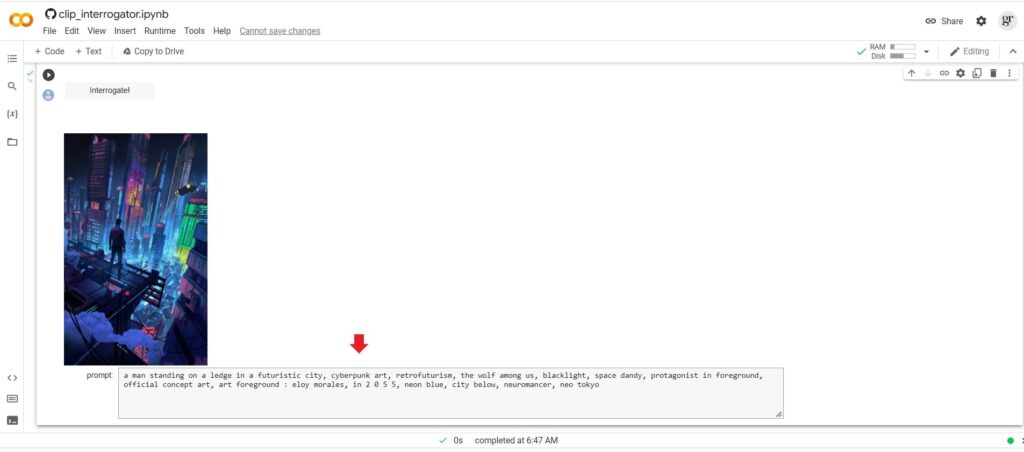
It is impossible to ignore prompt generators when talking about technology. Prompt generators are for people who are struggling to create good prompts.
Prompt generators are free-to-use tools that facilitate the process of creating prompts. With prompt generators, you don’t need to think up and write prompts. With a few clicks, your prompt will be ready.
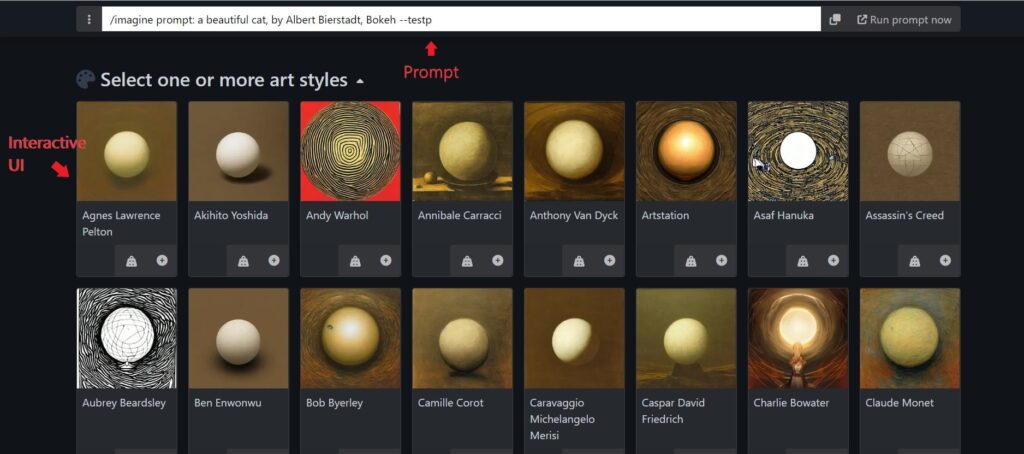
There are many prompt generators available for Midjourney, Stable Diffusion, and DALL.E 2. The most famous free prompt generators are promptoMANIA and Phraser.tech.
This is how you can leverage emerging platforms and technology to become a successful AI artist.
Text-to-Image Generative AI and Professional Artists
Professional artists are people who have in-depth experience in their field. They know every nook and cranny, from art medium to a color palette to the art style.
Hence, compared to people who are just getting started with generative AI models, professional artists have an edge to become successful at AI art. This is because professional artists are already well-versed in art jargon, color palettes, art mediums, shadowing, etc. They can easily use the jargon as keywords on their prompts. Their prompting skills are naturally high.
You can see how professional artists, architects, and graphic designers are leveraging the generative AI models in the below section.
Scope for AI Artists in Future
Generative AI models are witnessing a rapid increase in user base. While Stable Diffusion has over 10 million daily users across all channels, DALL.E 2 has more than 1.5 million daily users.
These models have the potential to be used in medical, photography, graphic design, illustration, stickers, and architecture fields.
🎉 #StableDiffusion can be fine-tuned to generate medical images, and the outputs can be controlled using natural language text prompts!
In our latest work, we use SD to create synthetic chest xrays and insert pathologies like pleural effusions.
🧵 #Radiology #AI #StanfordAIMI pic.twitter.com/FxQLIPmwdZ
— Christian Bluethgen (@cxbln) October 11, 2022
These statistics and experiments reveal that the scope for AI art and artists is inevitable. Even though the generative AI models are just got released a few months ago, there are endless possibilities visible already.
Once you have become a successful artist, you can sell the AI-generated artwork on StockAI, Adobe Stock, Shutterstock, and DeviantArt. For more details about AI-generated stock photos, check out my detailed article: AI-Generated Stock Photos: A Deep Dive.
Then, sell your prompts in the prompt marketplaces mentioned above. And, make money by selling your AI art as NFT.
With generative models becoming more advanced, there will still be plenty of room for AI art and AI artists.
Artworks of Successful AI Artists
Many professional artists and AI enthusiasts without any art background have already started leveraging generative AI models.
Have a look at their artwork:
1. Karen X. Cheng, is an award-winning director who consistently experiments with AI.
1/ Using AI to generate fashion
After a bunch of experimentation I finally got DALL-E to work for video by combining it with a few other AI tools
See below for my workflow –#dalle2 #dalle #AIart #ArtificialIntelligence #digitalfashion #virtualfashion pic.twitter.com/x3zP3fIp4G
— Karen X. Cheng (@karenxcheng) August 30, 2022
Testing out Stable Diffusion inpainting on a video
– by @justLV
See below for his process#inpainting #stablediffusion #artificialintelligence pic.twitter.com/XyFk4c1aUg— Karen X. Cheng (@karenxcheng) November 1, 2022
2. Paul Trillo, LA-based writer, director, and artist.
The you you are today is not the you you were yesterday.
Another week, another AI experiment using #dalle2 and @runwayml
This time AI was used to animated face masks, generate jewelry and create organic rock formations#aiart #vfx #ai pic.twitter.com/2re82hOksg
— Paul Trillo (@paultrillo) October 20, 2022
3. Will, an architectural designer.

Conclusion
To sum up, if you want to become a successful AI artist, you need to be good at creativity and the English language, know how to take prompt idea inspiration from other artists, and know how to leverage the latest technology and platforms related to artificial intelligence.
If you find this valuable information helpful, feel free to share this article.
